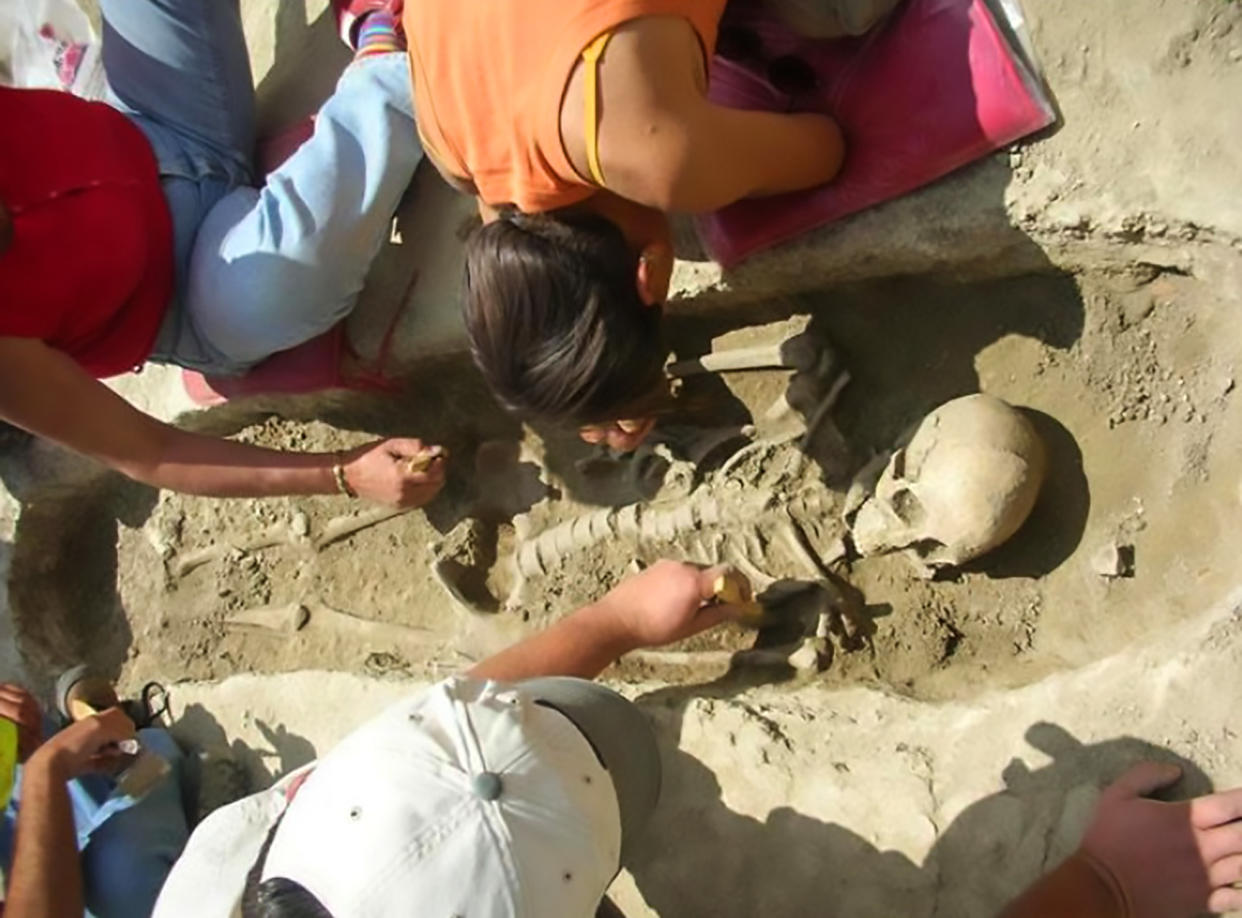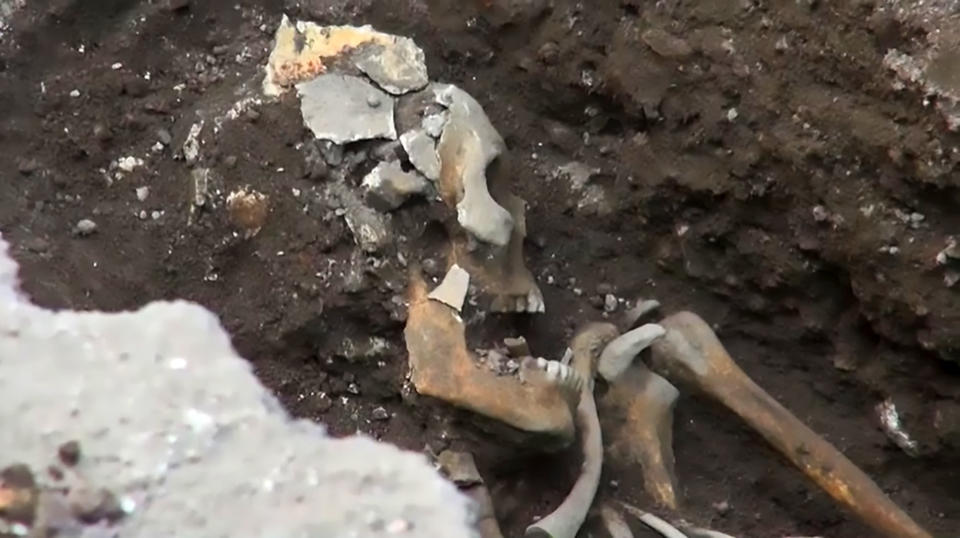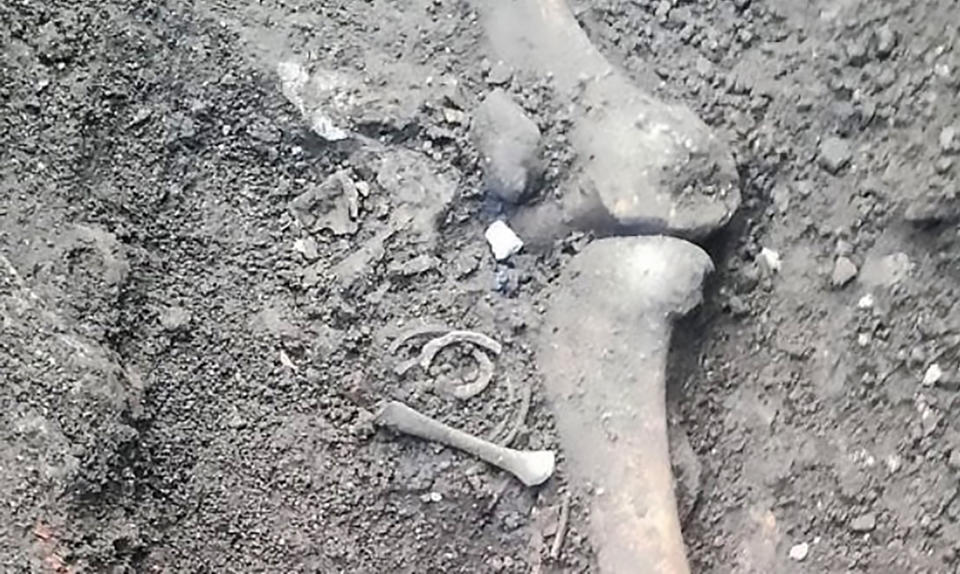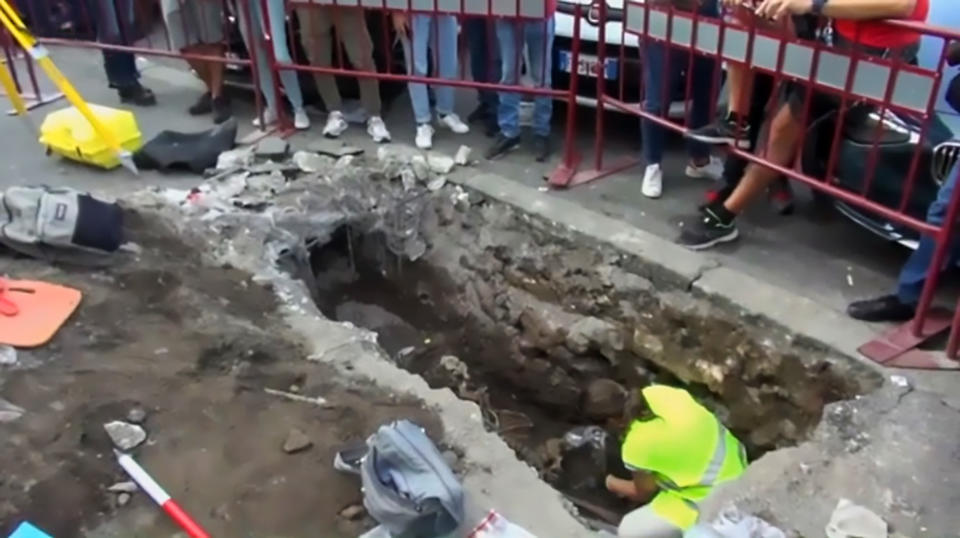Three Roman skeletons, thought to be a family, discovered under metro station in Italian capital

Three Roman skeletons have been found at a metro station in the Italian capital.
The skeleton are thought to be of a family, with the remains of the parents and young child found.
And even though the remains were found in Italy, the skeletons of the “father” have been dubbed the 'Pyramid Mummy'.
According to reports, the Ancient Roman skeleton, identified as a male, was found in front of the Piramide underground station in the Italian capital on September 20.

Two further skeletons, a mother and a child, were also found several days later in the same area.
According to local media, workmen were excavating the metro facilities when they came across an ancient human skeleton that was reportedly intact.
The area was immediately cordoned off as the authorities began investigating the mystery of the 'Pyramid Mummy', as he has been dubbed by local media.
According to a spokesperson for the Special Superintendency for the Archaeological Heritage of Rome, the skeleton originated from the era of the Roman Empire, but the exact date has yet to be established.

It is believed the bones found by the workers belonged to a family who were buried together.
Their burial plot was thought to be in the Necropolis Via Ostiense, one of the best preserved ancient cemeteries in Rome.
The cemetery was first discovered almost 100 years ago.
When researchers found the child’s remains, they were notably placed between the woman's hip and knee, which archaeologists believe indicate that she was probably the mother.

They were also found with metal nails around the bones, suggesting they had been buried in a box, probably a wooden coffin that had eroded away over the centuries.
Archaeological analysis on the three skeletons is ongoing.


